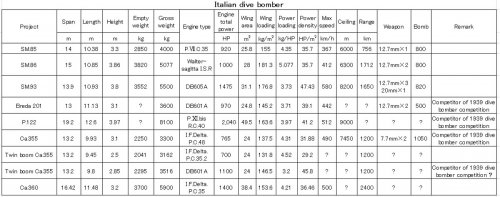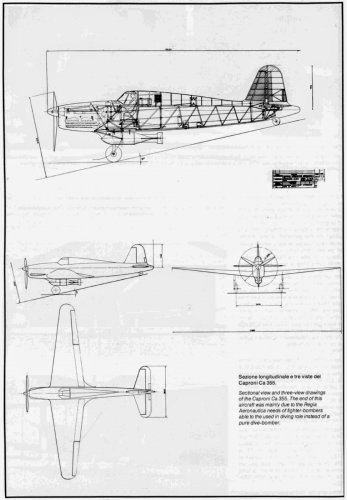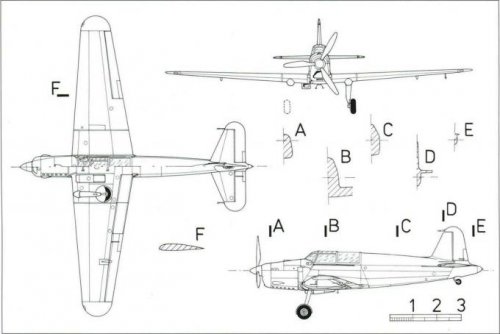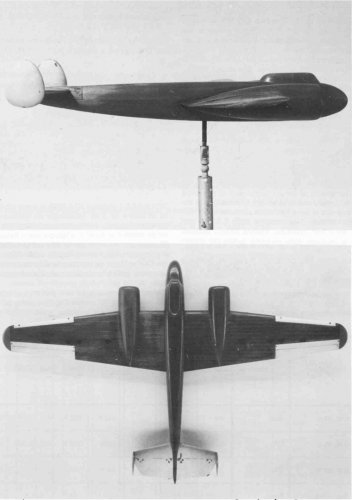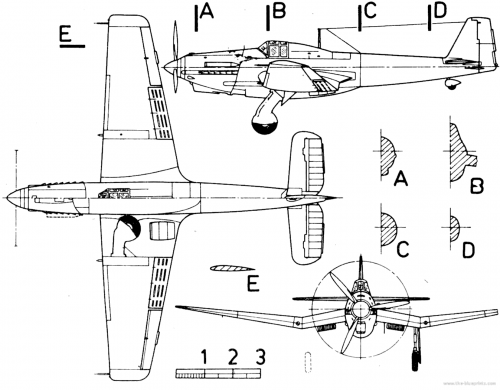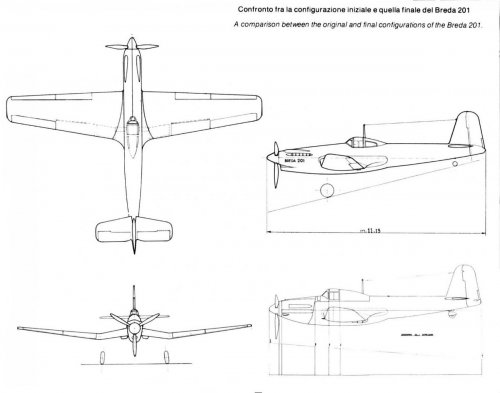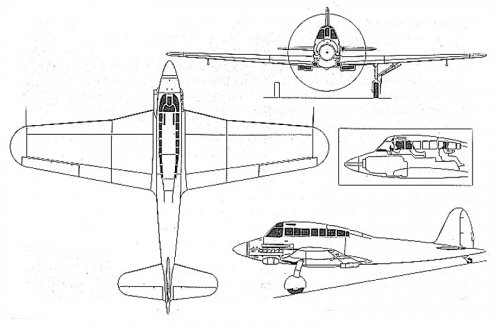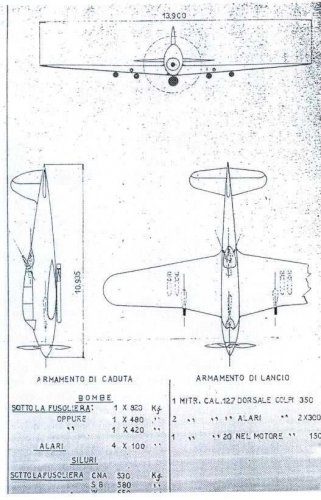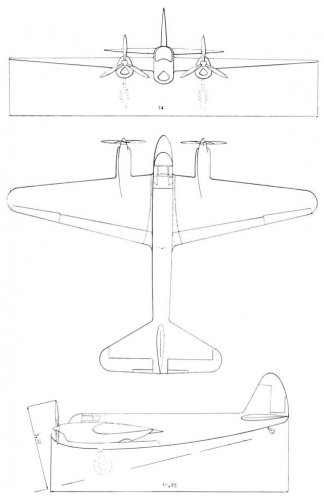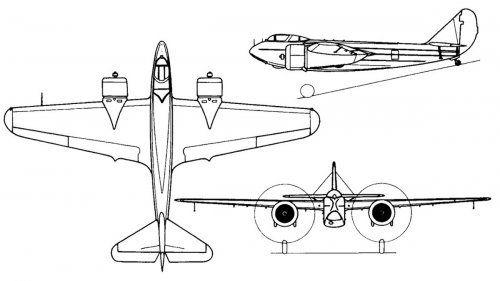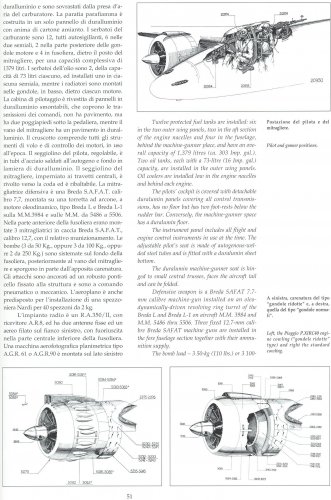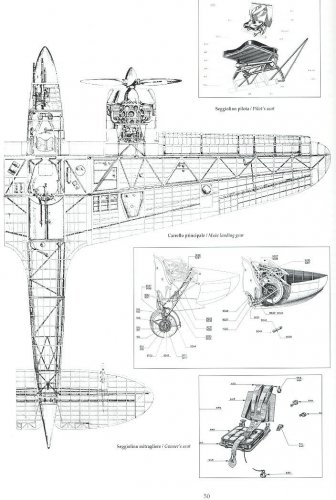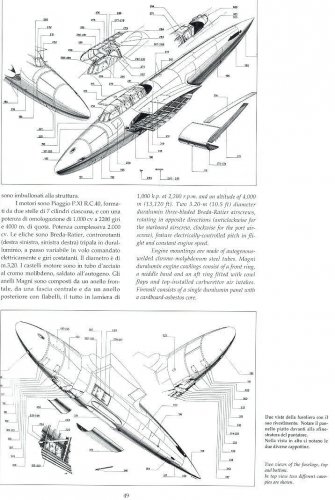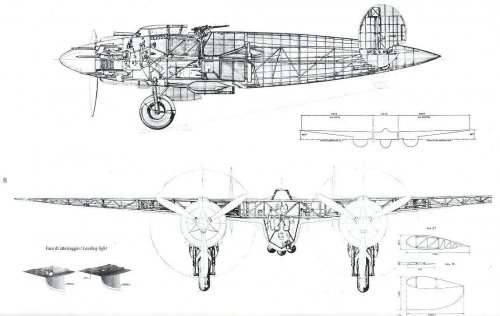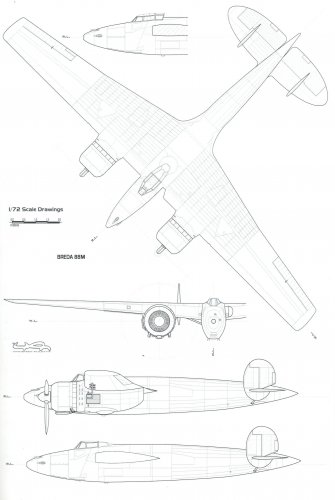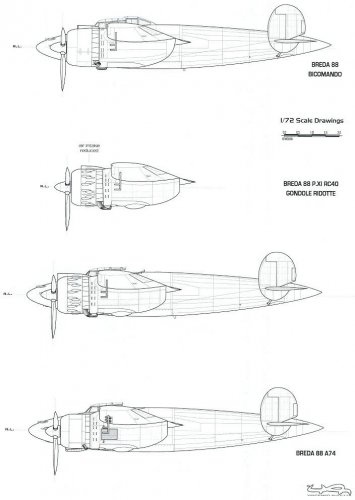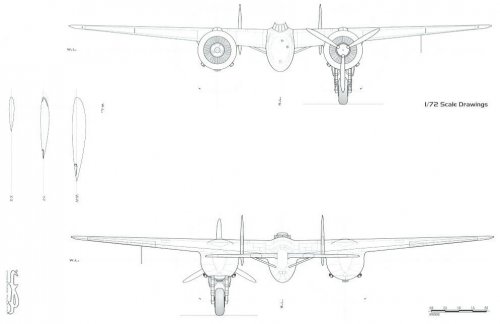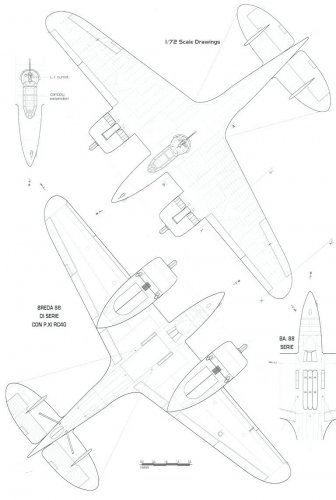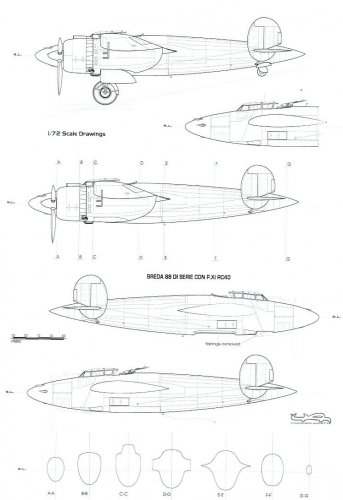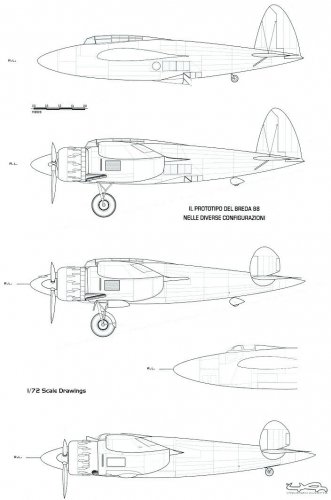Hi! Savoia Marchetti SM.93.
"The Italian Air Force developed a dive bomber in the mid-1930s, but the SM85 completed as a result was a failure, so the Ju87 procured from Germany were deployed.
Then, in 1942, the domestic dive bomber was developed again, and the Air Force also allowed the use of the high-performance DB605 among the engines available at that time, and gave instructions for development a high-speed single-engine aircraft to Savoia Marchetti.
The Savoia Marchetti designed a low-wing aircraft with retractable undercarriage applying all-wood structure, and the main feature of this aircraft was that the pilot boarded in the front of the slender double-seat cockpit, lying down. The layout was such that the posture that can withstand the large G (gravitational acceleration) caused by the pull up after dive was in a lying state, but the rear gunner had a normal seat arrangement. The armament could carry a 820 kg bomb below the fuselage, but it could also carry a torpedo instead of the bomb. It was also equipped with a 20mm motor cannon and a 12.7mm machine gun.
After Italy surrendered in 1943, the German army continued to produce this aircraft, and the prototype aircraft made its first flight at the end of March 1944 (or end of January). The aircraft had an all-wood structure and had more armament than necessary, resulting in an increase in weight. However, this aircraft showed high performance thanks to its excellent engine, and
set a phenomenal record of 900 km/h during dive. However, the pilot's seat in the prone position proved to be effective during dive, but the pilot felt distressed under normal cruising conditions. In addition, this aircraft was not mass-produced because the cruising speed when the bomb loaded was the average of bombers at that time. (There is also a opinion that the German army issued a mass production order for this plane, but the war ended without completion)."
Engine: Daimler Benz DB605 RC. 58, Wingspan: m 13,90, Lenght: m 10,93, Height: m 3,80, Wing area: mq 31,10
Loaded Weight: 5500 kg, Empty Weight: 3560 kg, Max Speed: 542 kmh @ 7000 m, Stall Speed: 122 kmh
Climb: 5'40" to 4000m, Service Ceiling: 8200m, Range: 1650km, Take off lenght: 300m, Landing lenght: 320m
Armament: 2x12.7 breda safat machineguns, 1x20mm mg151, 1x12.7 breda safat in the rear cockpit
https://forum.warthunder.com/index.php?/topic/367230-savoia-marchetti-sm93/
http://military.sakura.ne.jp/world/w_sm93.htm